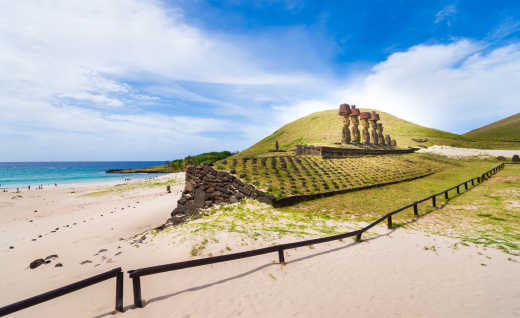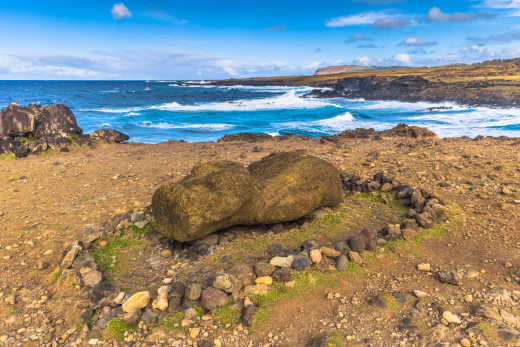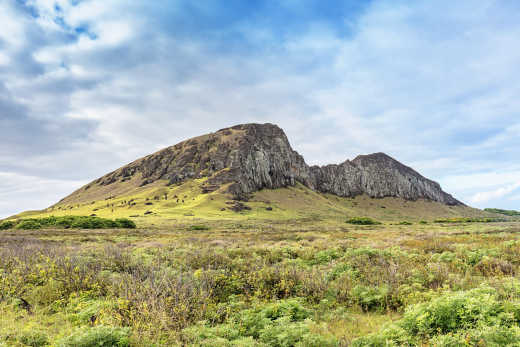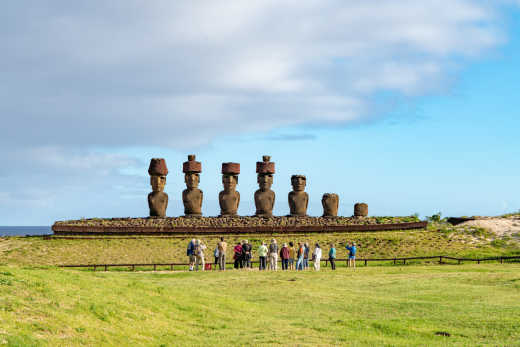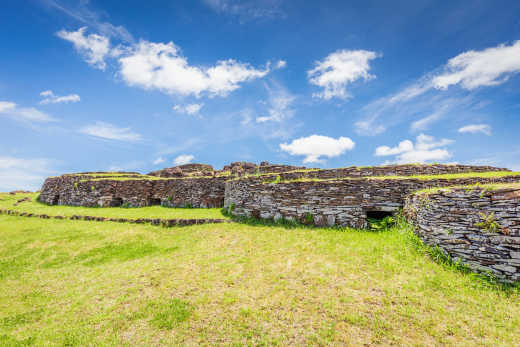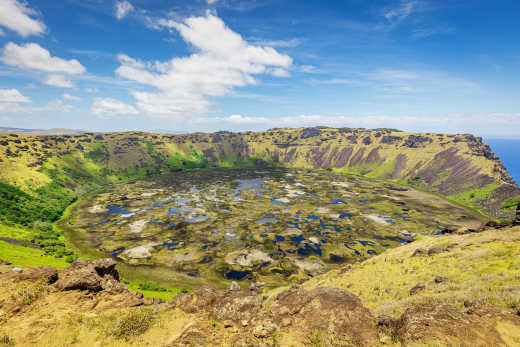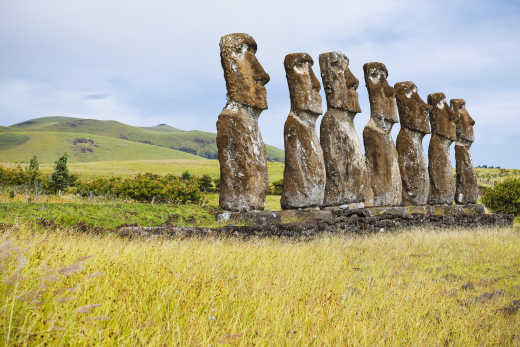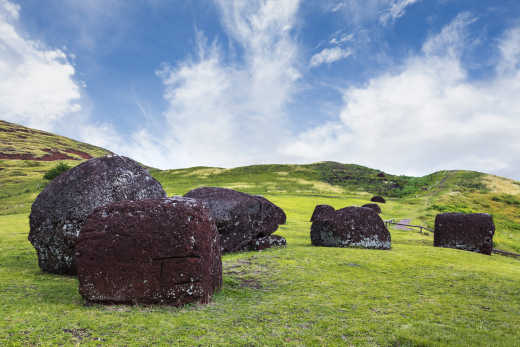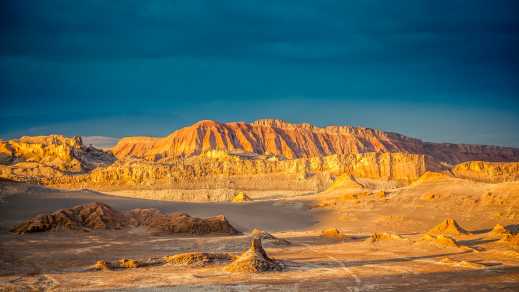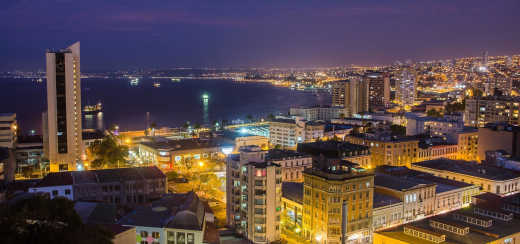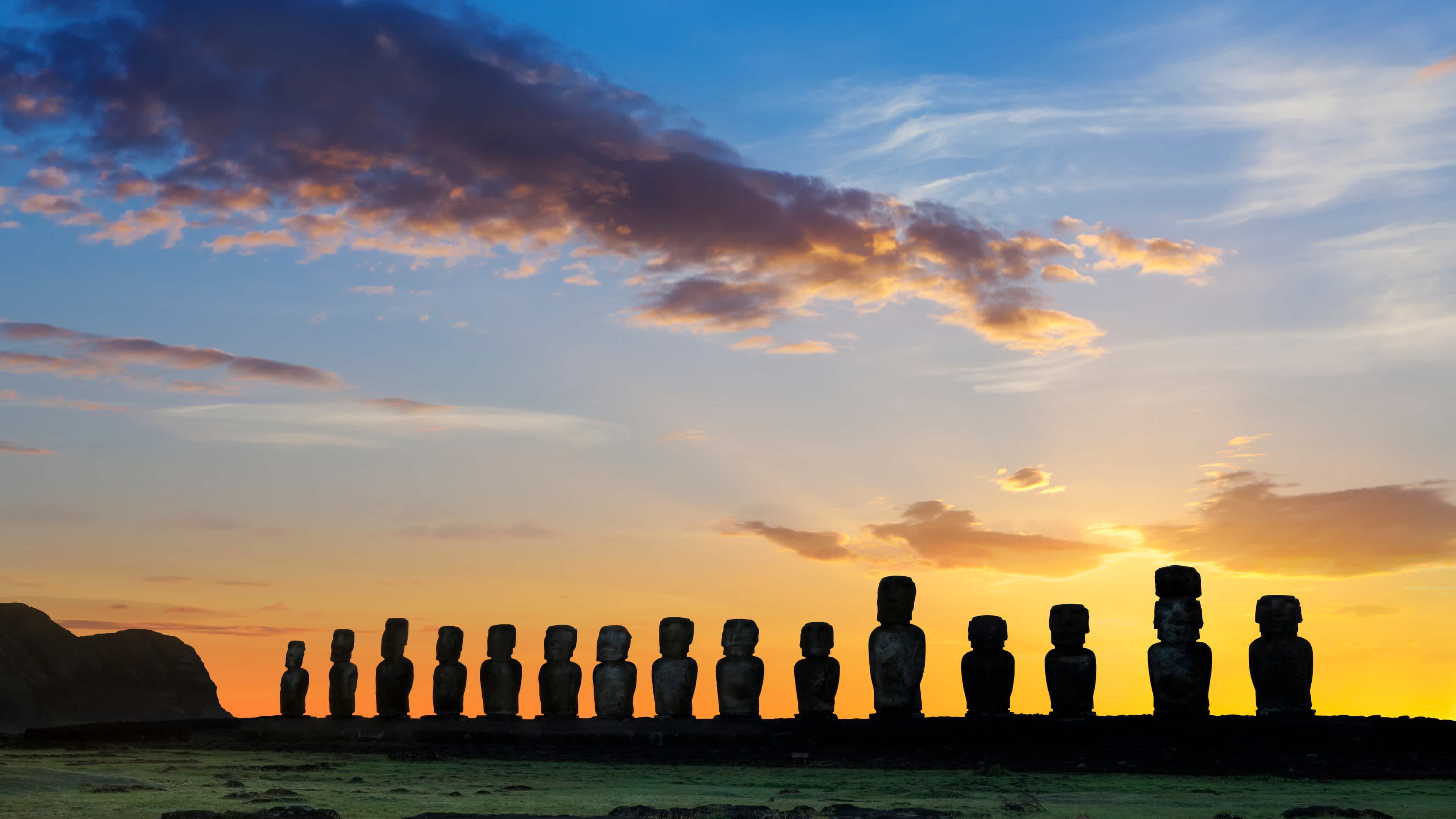
Easter Island Vacations
The top sights, highlights, tours & travel itinaries curated by our Travel Experts.
- Destinations
- South America
- Chile
- Easter Island
Travel to Easter Island on Vacation
Interested in visiting Easter Island? Plan your own tailor-made trip with a Tourlane Travel Expert. They will craft your perfect itinerary based on your travel tastes and preferences, and their local insider recommendations. More than 900 archaeological stone head sculptures, called Moai, enchant you as you roam this historical island. Known to locals as Rapa Nui, the island was inhabited by Polynesian tribes thousands of years ago and has now become one of the most famous UNESCO World Heritage Sites in the southern hemisphere. Put your boots on and prepare to wander this land of historical discoveries!
![Ahu Nao-Nao, Anakena Beach, Easter island Photo of Ahu Nao-Nao on Anakena beach with seven moais statues]()
Anakena Beach
![Landscape, Ahu Akahanga, Easter island View of the Landscape of Ahu Akahanga on Easter island]()
Ahu Akahanga
![Rano Raraku Volcano, Easter island View of the beautiful Rano Raraku Vocanic Crater with many moais statues under blue summer sky]()
Rano Raraku Volcano
![Ahu Tongariki, Easter Island Ahu Tongariki panorama of polynesian Moai Statues standing side by side in a row along the pacific ocean coast under blue summer sky]()
Ahu Tongariki
![Ahu Nau Nau, Easter Island A Group of Tourists are watching Moai statues of Ahu Nau Nau on Easter Island in Chile]()
Ahu Nau Nau
![Orongo, Easter Island View of Orongo Stone Village Stone Houses on Easter Island]()
Orongo
![Rano Kao Volcano, Easter Island Photo of Rano Kau Volcano Crater Lake under blue summer sky]()
Rano Kao Volcano
![Ahu Akivi, Easter Island Ahu Akivi has seven moai statues, all of equal shape and size, and is also known as a celestial observatory]()
Ahu Akivi
![Puna Pau Quarry, Rapa Nui, Easter Island View of the Puna Pau volcanic scoria stone quarry on the island of Rapa Nui]()
Puna Pau Quarry
Things to Do in Easter Island
1. Anakena Beach
Coconut palm trees and popular bathing spots create an idyllic setting at the end of Anakena Bay. A cave can be found on the slopes off one of the beach’s green embankments, where ancient rock carvings are a must see. After getting your fill of prehistoric art, enjoy a picnic on the sunny beach, and repose as you dip your toes in the blue waters.
2. Ahu Akahanga
Thirteen fallen Moai scatter the grounds of Ahu Akahanga, once one of the biggest villages on the island. According to legend, the founding father of Easter Island, Hotu Matua, is buried in this abandoned village. The Ahu Te Peu ruins have remained virtually intact since the departure of its inhabitants, and is one of the most important archaeological sites on the island.
3. Rano Raraku Volcano
A cratered lake centers the ellipsis-shaped Rano Raraku, a dormant volcano that peaks at approximately 524 feet. It was the production point for many of the Moai sculptures, which is evident from the hundreds found across the volcano’s slopes. The volcano itself provided the stone used to create these ceremonial sculptures.
4. Ahu Tongariki
No word is held more sacred than Ahu to the Rapa Nui. Ahu represents the tribal burial grounds of their bestowed leaders, which are presented in the form of Moai statues. The Ahu Tongariki is the largest ahu on Easter Island, and is one of the most magical. As the sun sets, witness the orange glow of light pierce the gaps of these iconic stones.
5. Ahu Nau Nau
Venture further down the Anakena Beach and you’ll find the Moai statues known as Ahu Nau Nau. Legend has it that Hotu Matua, the supreme chief of Easter Island, once landed in this location. Paenga House, the house in which the chief lived, is worthy of a visit alone.
6. Ahu Ature Huki
Standing above the backdrop of a stunning beach-side cove, the impressive Moai of Ahu Ature Huki has been restored into its original form after being toppled in a tribal feud. Take a breath before taking in this striking sculpture, and admire its imposing dimensions.
7. Orongo
In the southwestern tip of Easter Island is Orongo, a stone village of sod-covered houses located next to volcanic caldera Rano Kau. This ceremonial village of 53 flat-stone houses dates to the 15th century, and provides an intimate portrayal of life beneath the natural wonderment of Rano Kau. Let your wandering spirit come out here, and lose yourself in the village’s many nooks and crannies.
8. Rano Kao Volcano
Rano Kao is a dormant volcano with a freshwater lake at its center, a 1,050-foot mountain with a sheering face that leads to its cratered middle. Hike the face of this mountain if you’re feeling like a challenge—or, if you want something more relaxed, enjoy a drive up. Either way, prepare yourself for the waters and epic views on offer here.
9. Ahu Akivi
At Ahu Akivi, seven Moai look out to sea in one of the epic landscapes that the island has to offer. According to oral tradition, the seven Moai are a symbol of the youthful explorers that came on a scouting mission for chief founder, Hoto Matu. Located on the southwest flank of the Maunga Terevaka Volcano, the flying Moai will stay in your memory long after your trip.
10. Puna Pau Quarry
Located in the southwest region of Easter Island, the Puna Pau Quarry played a pivotal role in the stone masonry that helped craft these giant sculptures. Explore the quarry at your own pace, and see the place that built the hats (pukao) that were placed on the heads of Moai statues. Less
Visit Easter Island on These Tours
![South America - Chile - Atacama Desert Admire the Atacama Desert, pictured here in the evening, on a Chile vacation]()
from
$4,753
excl. Flight (p.P.)
Useful Information for Your Easter Island Trip
Other Places to Visit During Your Tour
TourlaneCare

